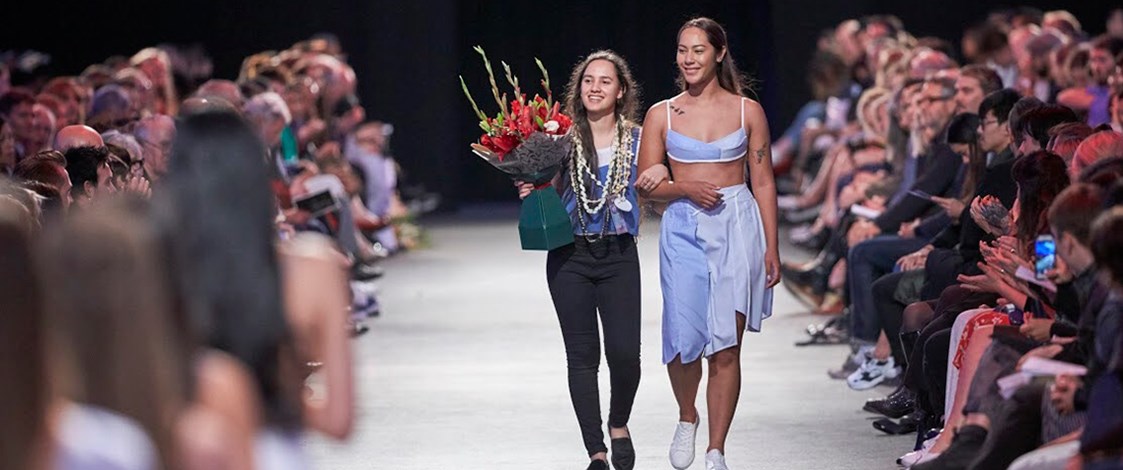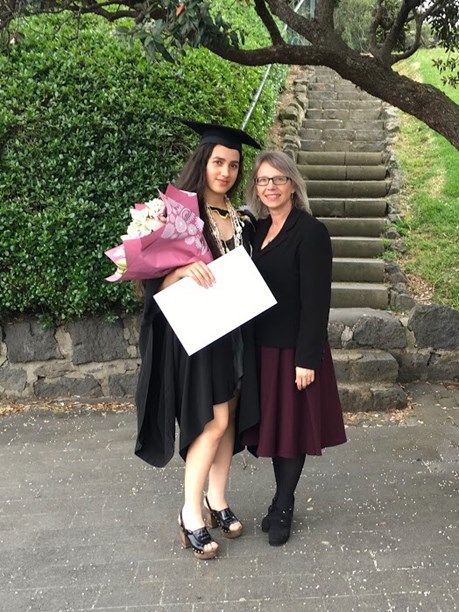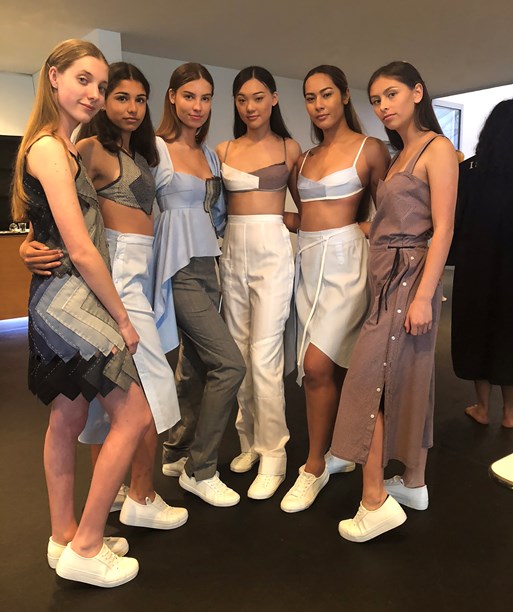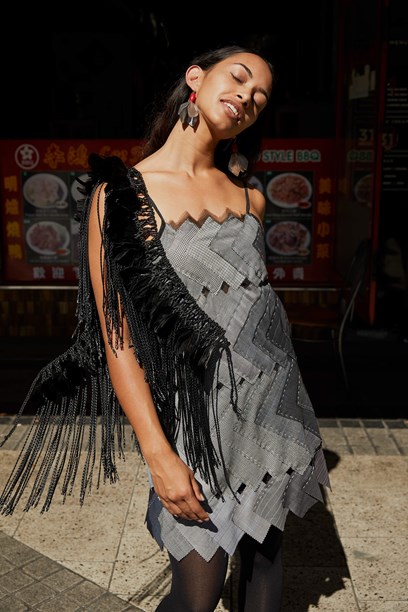Stories
Tarita Georgia Rahui
1997-

Adoption, adaptation and use of the resources at hand are hallmarks of Moana-inflected enterprise, and are evident in the designs of Tarita Georgia Rahui.
"I spoke of the ideas behind my work to my father," Tarita says. "It reminded him of his old uncles who would have their one nice suit, and how they would take great care in the upkeep and repair. I think this correlation between the attitudes of my elders and the thinking behind this piece speaks to the resilience and resourcefulness of Pacific people."
Tarita, who has Cook Island and European heritage, was born in Auckland in 1997. Although there were a few seamstresses in her extended family, she says it was her mother’s sense of fashion that was most inspirational in her choice of career. "I have always admired the way she takes such joy in self expression, with her curated secondhand finds, classic, and eclectic pieces - she was the first to show me fashion as an art form to tell a story."

Tarita and her mother at her graduation ceremony in Auckland, 2018. Image © Tarita Georgia Rahui.
Like many of her contemporaries, Tarita’s first fashion event was the Schools Trash to Fashion competition; the last of which was held in 2015. Tarita and her friend entered in 2011 with a dress made out of discarded vintage sewing patterns. "We didn’t place, but looking back at this, and also a 2014 Eco Fashion Week show I attended in Wellington where I remember a standout upcycled suit jacket, I can see how these would have planted the first seeds for sustainability within my practice. This has come full circle, with my use of discarded wool suiting swatches and upcycled pieces."
A dress, made from discarded wool fabric swatches that are pieced together like a sophisticated patchwork quilt, is part of the New Zealand Fashion Museum exhibition Moana Currents and demonstrates her creative practice. The swatches were gifted to her by Trevor Hookaway, owner of fabric wholesaling company Hawes & Freer. The base of the dress is a silk organza off cut donated by a friend, the straps are made from sandwash silk remnants, and the hand stitching is done with organic cotton, unthreaded from offcuts. Part of Tarita’s graduate collection at Whitecliffe College of Arts and Design, the dress showcases a keen sense of symmetry and stitch work. It is a modern dress that plays with the eternal contrast between masculine and feminine, old and new.

The ‘Trevor dress’ (left) is made from fabric swatches gifted to Tarita by Trevor Hookaway of the fabric wholesaler, Hawes & Freer. The dress was part of her graduate show in 2018. Image © Tarita Georgia Rahui.
"Comparisons have been drawn to island patterns and tivaevae," she says. "In the previous year (2017), I did look at patterns in Cook Island tattooing, carving and the woven bands of church hats, and I can see how threads of my influence would carry through in my practice."

The 'Trevor dress' with a kākahu by Kiri Nathan modelled by Layla Dole. Photo by Mara Sommer.
Tarita also looked to Japanese sashiko and boro patchwork for inspiration, exploring the art of continual repair, and the characteristic of visible mending and stitching.
Tarita continued to explore sustainable endeavours alongside her studies, with a six week artisanal craft immersion and sustainable design collaboration experience in India, as part of the Prime Minister’s Scholarship for Asia in 2017. In 2018 she took part in the Youth Fashion Summit in Copenhagen - a sustainability education programme for students engaged in sustainability and fashion.
Tarita currently works as a junior pattern maker at The Pattern Table where she is learning as much as she can about the industry. In her spare time she continues to work on her own designs. "I’m working on pieces for myself and friends, and amending my old patterns - putting the skills I’m learning into practice."
Text by Dan Ahwa. Banner photo of Tarita in her graduate fashion show, 2018, by Michael Ng. Image © Michael Ng.
Published June 2020.